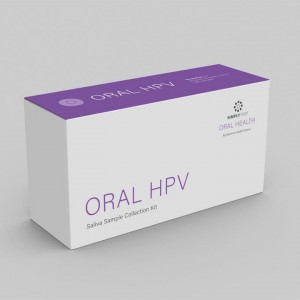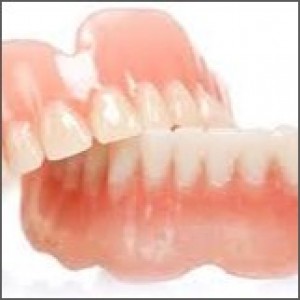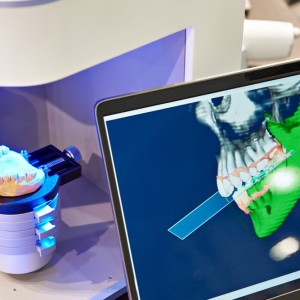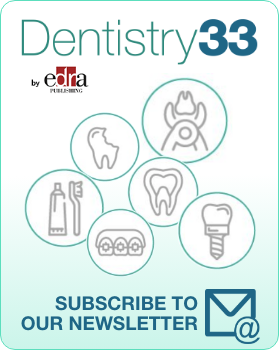
Can powerful LED curing lamps harm the pulp tissue?
Edoardo Mancuso
LED light curing lamps have become today primary tools among dentists. Nevertheless the twenty-second waiting time required to achieve an optimal composite resins polymerization is perceived by many dentists as long, exhausting and often onerous. Following the market demands, manufacturers have developed powerful LED light-curing units capable of providing radiant emittance values of over 2000 mW/cm2, in order to reduce clinician chair time. These powerful devices generate considerable amounts of heat leading to higher temperature increase within the composite resin layer during resin polymerization as well as within the pulp chamber. It is well known that heat can damage the pulp. According to a frequently cited study (Zach and Cohen 1965) if the pulp temperature increases of 5.5 ◦C, a subsequent rate of 15% of necrotic pulp tissues would be observed.
On this matter Prof. Cesar Arrais and his team have written an article, published this summer by the Journal of Dental Material. The purpose of this study was to evaluate in vivo the pulpal temperature rise, histological changes, and presence of acute inflammatory precursors arising after exposure of upper human premolars, with deep buccal Class V preparations, to light emitted by two Polywave LED curing lamps.
MATERIAL AND METHODS
Two Polywave LED curing units were used in the research: one commercially available (Bluephase® 20i, Ivoclar Vivadent; 1231 mW/cm2) and one experimental (10000 mW/cm2) which was exclusively built by Ivoclar Vivadent to provide extremely high radiant emittance values over very short exposure times. In the study 60 intact first premolars teeth were tested. Following the placement of a rubber dam, a small occlusal preparation was made in the center of the tooth. A small diamond bur was used to produce a minute pulp exposure at location. Then a wireless temperature acquisition system was inserted into the pulp chamber through the occlusal access opening and the pulpal temperature was measured. A controlled-size class V tooth preparation was made on the buccal surface of the tooth and the curing device tip was placed directly over the preparation. Half of the teeth were randomly sequentially exposed to the radiant output from the Bluephase20i unit for different curing times (10s, 20s or 60s) in the high intensity mode, allowing a 7-min span between each exposure. The other half of the teeth were exposed to light emitted from the Experimental device for 1s or 2s in the Turbo mode. The teeth were extracted approximately 2 h after exposure to the light-curing units and histological and immunohistochemical analysis were held, evaluating the presence of specific inflammatory precursors: IL-1β and TNF-α.
RESULTS
The result of the study showed that teeth exposed to 60s/20i revealed the highest peak pulpal temperature and ΔT values. The histological analysis from 10s/20i group and from1s/Exp group revealed that the odontoblastic layer was not affected and that no inflammatory changes were assessed. However after exposure to 1s/Exp some blood vessels were dilated and congested. Dilated and congested blood vessels were also seen in 2s/Exp and 60s/20i groups. The immunochemical analysis indicated a slight presence of IL-1β and TNF-α after exposure to 10s/20i and 1s/Exp. Exposure to 20s/20i caused moderate expression of IL-1β, while exposure to 2s/Exp EM caused intense expression of IL-1β. Discussion The research findings indicate that, the values of pulpal temperature increase obtained after short exposure using higher radiant emittance, were not significantly different from those observed using longer exposures with lower radiant emittance. However the expression of IL-1β and TNF-α demonstrated that high radiant emittance values have more potential to injure pulp tissue in comparison to lower values. Prof. Arrais declare in the article that this result was unexpected as such high radiant emittance values caused lower PT increase than the threshold temperature increase of 5.5 ◦ C. For this reason the authors suggests that short exposure periods at high radiant emittance values should be used with caution.
CONCLUSION
The article concludes assessing that:
- Peak pulpal temperature and ΔT values of human premolars during short exposure to high radiant emittance values were not different from those obtained when teeth were exposed to longer exposure with lower radiant emittance values
- Short exposure to high radiant emittance values caused a more intense expression of IL-1β and TNF-α in all pulp tissues than longer exposures with lower radiant emittance values.
- Pulpal temperature increase values similar to or even higher than 5.5 ◦ C caused no noticeable histological changes in the pulp tissue.
In conclusion, although a reduction of chair time is always desirable, especially during curing is advisable to take all the time needed to obtain a good polymerization avoiding any harm to the health of our patients.
For additional information: In vivo temperature rise and acute inflammatory response in anesthetized human pulp tissue of premolars having Class V preparations after exposure to Polywave® LED light curing units
 Read more
Read more
Much like EMTs rushing to the scene after an accident, stem cells hurry to the site of a skull fracture to start mending the damage. A new finding has uncovered the signaling mechanism that triggers...
Products 05 November 2025
SimplyTest has launched a groundbreaking saliva-based test to detect high-risk strains of oral human papillomavirus (HPV), a major cause of oropharyngeal cancers.
News 05 November 2025
Perimetrics, Inc., a dental technology company pioneering quantitative diagnostics, announced today that the U.S. Food and Drug Administration (FDA) has granted clearance for the InnerView...
News 05 November 2025
On October 15, open enrollment for Medicare began nationwide. Hundreds of thousands of seniors in New Jersey will once again face the challenge of finding the right Medicare coverage, including the...
Digital Dentistry 04 November 2025
Digitalisation is an expanding field in dentistry and implementation of digital teaching methods in dental education is an essential part of modern education.










